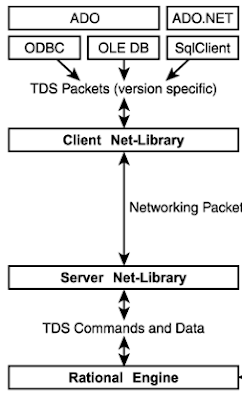How to get the n-th row in a SQL table ..in 4 different ways! Simple, clear and with example!
Hi guys,
After the deep previous post about the SQL statistic today we will talk about a more more easy topic.
Have you ever needed to extract from a table the second row, or the third or the n-th row?
This post is for you!
Extract ..Get..Select... the n-th row in a table
We can solve this task in more than one way.
To follow my example you can simply execute the following command that create and fill the Ord table with some data
This is our table:Create Table Ord (Id int identity(1,1) primary key, Code varchar(10)) Insert into Ord (Code) values ('A'),('B'),('C'),('D'),('E'),('F'),('G'),('H'),('I')
The first way I seen many times is using a derivate table.
Yes, you can solte the request by split the problem in two parts.
In the first part you can get the first n-th rows. This will be the derivate table.
Then you can get first row of this derivate table ordering by id in descending mode.
Is it not easy?
A simple example could be the following statement:
Select Top 1 * From
(Select top 3 * From ord Order By id) as t
order by id desc
I get..Another way to get the same result is to use the window functions.
We need a derivate table.
The statement inside the derivate table use the Row_Number window function to show the number of row. The first row will have the row number 1, the second row the number 2 and so on.
We cannot look at the id field because some values may not be present, the table may not be sorted by the id field and also would not be logically correct.
You can extract the 3rd row in this way:
Select * From
(Select Row_Number() Over (Order by id) as numrow, * From Ord) As t
Where
t.numrow = 3
I get the same resultWe have then the "Mathematical" way
We can get the nth row by using the division (/) operator.
Since this operator perform a round to integer division operation, the following statement returns only those rows whose ID divided N and then rounded is 1.
For N = 3 i get the ID equal to 3,4,5 so i need to use also the TOP clause..
Select Top 1 * From Ord Where Id / 3 = 1
Finally we can get the result by using the OFFSET, FETCH NEXT clause. This clauses are defined in the SQL ISO ANSI standard.
Select * From Ord
Order By id
Offset 2 ROWS
Fetch NEXT 1 ROW ONLY
Great! We have 4 ways to get the nth row of a table.
....but what is the fastest way to get the nth row?
The fastest way to get the nth row
Well we must say that the positive thing is that all four statements read the same number of pages (remember we have the primary key on the id field)
(1 row affected)
Table 'Ord'. Scan count 1, logical reads 2, physical reads 0, page server reads 0, read-ahead reads 0, page server read-ahead reads 0, lob logical reads 0, lob physical reads 0, lob page server reads 0, lob read-ahead reads 0, lob page server read-ahead reads 0.
(1 row affected)
(1 row affected)
Table 'Ord'. Scan count 1, logical reads 2, physical reads 0, page server reads 0, read-ahead reads 0, page server read-ahead reads 0, lob logical reads 0, lob physical reads 0, lob page server reads 0, lob read-ahead reads 0, lob page server read-ahead reads 0.
(1 row affected)
(1 row affected)
Table 'Ord'. Scan count 1, logical reads 3, physical reads 0, page server reads 0, read-ahead reads 0, page server read-ahead reads 0, lob logical reads 0, lob physical reads 0, lob page server reads 0, lob read-ahead reads 0, lob page server read-ahead reads 0.
(1 row affected)
(1 row affected)
Table 'Ord'. Scan count 1, logical reads 2, physical reads 0, page server reads 0, read-ahead reads 0, page server read-ahead reads 0, lob logical reads 0, lob physical reads 0, lob page server reads 0, lob read-ahead reads 0, lob page server read-ahead reads 0.
(1 row affected)
Completion time: 2023-01-08T19:27:00.5465354+01:00
Only the 3rd way (the statement that use the division operator) reads one more page.
Looking at the exection plans:
We can say that the worst performing statement is the first while the best is the fourth.
Use the Offset fetch next clause is a good way!
That's all for Today! Have a great week!
~Luke









Excellent post!!! thank you for the post, help me a lot
ReplyDeleteWebhosting Support
DevOps Consulting Company In India
First of all - grea post.
ReplyDeleteAll valid options. All of the main options.
1. This is not the biggest data set I've seen, so making conclusions on IO, time, and estimations with the results shown here is really wrong.
2.Using offset or top(n) is fastest when you take the first n rows for pagination.
Yet when working with more data it usually get a bit more efficient using row_number()
I have to admit that my production experience is for pagination - n rows and not just one row - so for this specific case it could be a bit more performant.
This need to be tested on real data.
3. It always depends...
If you have a clustered index that is sequence or identity - I would always work on that and make math. It will scale the same as for these 5 rows example. If you pick a soluction - try scaling it. Will it work on 10.000.000 rows.
in (2) I ment - when wrking with more data and not looking for the first (n) rows. When looking for an inner set or nth row
Delete